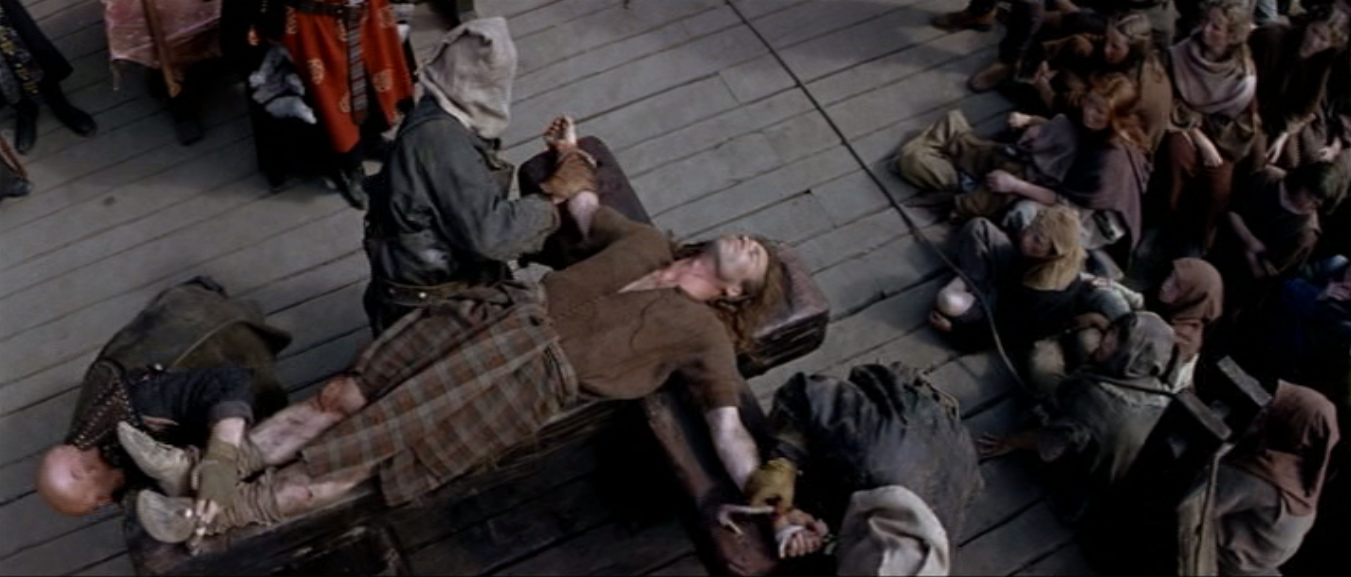
So the disciples went and did as Jesus commanded them. They brought the donkey and the colt, laid their clothes on them, and set Him on them. And a very great multitude spread their clothes on the road; others cut down branches from the trees and spread them on the road.
It’s difficult to place oneself in the mindset of a different culture whose paradigms of thinking are so different than our own. Imagine thinking in terms of symbology rather than in the logical way we think. Imagine thinking in symbols. Movies often use symbols to make a point. Think of the many times in a movie where someone who’s unjustly being killed or tortured will assume a cruciform pose – I’m thinking of the movie Braveheart.
We do communicate in symbolic ways more often than we might think. Think of a wife dramatically taking her wedding ring off after an argument.
Where do the symbols come from? They come from our common culture, from our literature and mythology, and lately from our media. Of course, most prominent among that literature has been, and should be, the Bible. The Bible is incredibly rich in symbology, even at simply a secular level! Think of the symbolical power of a host passing bread to his guests, or even pouring a glass of wine. Symbols are shorthand for meanings that can take volumes to explain.
Palm Sunday is loaded with symbology. We’ve seen the two big Old Testament texts founding the Palm Sunday event. The text from Genesis is especially laden with symbology. Here it is again: “Binding his donkey to the vine, And his donkey’s colt to the choice vine, He washed his garments in wine, And his clothes in the blood of grapes.”
Almost every word is symbolical. In fact, how else could the words be used? What does a donkey being bound to a vine, and a man washing his garments in wine, have to do with a king?
So, in the text we have several symbols: (1) the donkey, (2) the vine, (3) the colt, (4) garments, (5) wine, (6) clothes, (7) blood. Funny how five of these symbols make it in the Palm Sunday Gospel, and two of them come together in the dramatic event of that week!
The multitudes knew what they were doing. They knew the sources of their symbology, from the Old Testament. The event was laden with symbology, and they wanted to take part. There’s the donkey and colt! That triggered them. That reminded them of the original prophecy from Genesis, so they brought out the vines and branches and clothing and garments, as if it say, “You’re the One! You’re the King who will save us! Do your thing with vines and wine and blood.
Some complain about the symbology going on in the liturgy. The liturgy is replete with powerful symbology. Some believe these symbols overwhelm the message. But there is rarely a message without symbols going along with it. Certainly our media “narrative-makers” understand this. What’s the symbolism of using, say, an American flag in a scene? It’s part of the message.
The liturgy operates the same way. Why green during certain seasons, or red, violet, or white? Why does a minister wear ancient garments still today? What’s going on with the clerical collar? Did you know the cincture around the minster’s waist represents the cords used to scourge Christ? Due to a modern mind numb to the language of symbology, such items simply don’t communicate. They should. They should be taught. They certainly moved the characters in the Bible. Why? Because they are part of the method of communication in the Scripture.